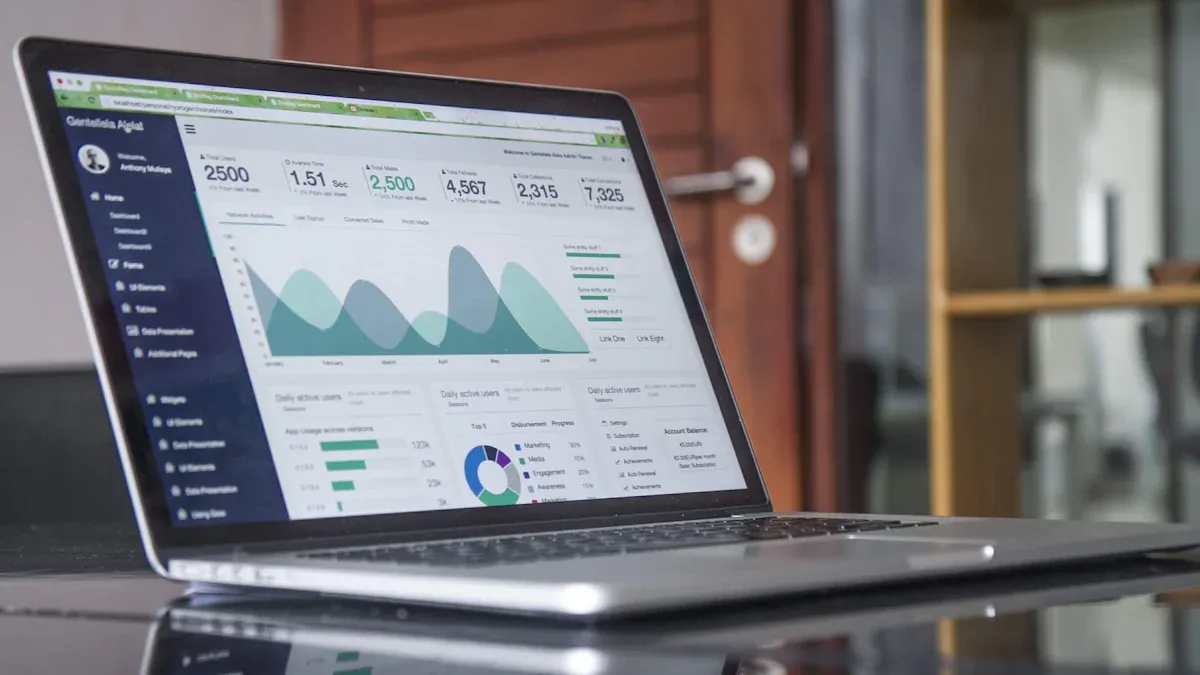Best no-code web app builders for beginners in 2025

No-code tools have revolutionized how web apps are created, making them accessible to beginners by simplifying coding tasks. For instance, the no-code market is projected to grow to $52 billion by 2024. With the best no code web app builder, apps can be developed 10 times faster than traditional methods. These tools are user-friendly and perfect for those just starting out. As the demand for web apps continues to rise, utilizing no-code builders can help bring your ideas to life without the need for coding knowledge.
Key Requirements of a Good Web App Builder
When picking a no-code platform, focus on features that make building apps easier and better. A good builder should work well, be easy to use, and grow with your needs. Below are important things to check:
Performance Metrics
A good web app builder helps your app run smoothly. Here's a table showing key performance points:
Metric | Description |
|---|---|
Response Time | How fast the app answers user actions, best under 200ms. |
Uptime | How often the app stays online, aim for 99.99% to keep users happy. |
Error Rates | How often requests fail, high rates mean problems that annoy users. |
Page Speed | How quickly the app loads, aim for under 3 seconds for better user experience and SEO. |
Scalability | The app's ability to handle more users without slowing down, important for growth. |
User-Friendly Features
A no-code platform should be simple for everyone, even beginners. Look for these helpful features:
Drag-and-drop interface: Lets you build your app by moving items around, no coding needed.
Pre-designed templates: Ready-made designs save time and make your app look great.
Integration options: Connect easily with other tools to add more features.
By focusing on these points, you can find a no-code platform that fits your needs. Whether you're new or experienced, these features make building apps simple and stress-free.
Overview of No-Code Platforms

No-code platforms have changed how people make web apps. These tools remove the need for coding, making app creation easy for everyone. Whether you're new or experienced, no-code platforms let you build apps that fit your needs.
What Can No-Code Platforms Do?
No-code platforms can do many things in different industries. Here are some examples:
Financial Services: Speed up loan approvals and track compliance easily.
Retail and E-commerce: Create stores with product lists and payment options.
Real Estate: Simplify rent collection and tenant requests.
Manufacturing and Logistics: Improve supply chain and quality checks.
Nonprofits and Government: Handle donations and citizen services better.
Professional Services: Build tools for managing clients and projects.
Hospitality and Tourism: Make booking systems and collect customer feedback.
Key Features of Modern No-Code Platforms
AI-Powered Features: Use AI to save time and improve apps.
Industry-Specific Solutions: Templates designed for specific business needs.
Collaboration Tools: Help teams work together from anywhere.
These platforms are simple to use, so you can focus on your ideas. With drag-and-drop tools and ready-made templates, you can quickly create your app. No-code tools also grow with your business, handling more users as needed.
Using no-code platforms saves time, cuts costs, and helps you make great apps without coding.
Detailed Comparison of the Best No-Code Web App Builders

Momen
Key features
Momen is a flexible no-code tool designed for ease of use.Its full-stack capabilities eliminate the need to switch between different tools, providing a seamless development experience. The intuitive drag-and-drop interface allows beginners to design applications effortlessly. Additionally, Momen's integrated AI builder enables the incorporation of intelligent features without any coding requirements. The platform's robust backend tools ensure smooth performance and efficient data management. Furthermore, Momen offers strong integrations and APIs, facilitating seamless connections with other tools and services.
Pricing
Momen has a free plan for small projects. Paid plans start at $33 monthly and include AI tools, more storage, and better scalability. Check Momen's pricing for more details.
Why it’s great for beginners
Momen makes app building easy with its simple design and AI tools. Beginners can create apps that grow with their needs. Its low cost and ease of use make it perfect for new users.
Bubble.io
Key features
Bubble.io is a strong platform for making advanced web apps. It has drag-and-drop tools, workflows, and a flexible database. You can build, manage, and host your app all in one place. Bubble.io supports user accounts, forms, payments, APIs, and app tracking for a smooth experience.
Pricing
Bubble.io has a free plan for small apps. Paid plans start at $29 monthly and offer more storage, scalability, and connections. Visit Bubble.io's website for more info.
Why it’s great for beginners
Bubble.io gives you tools to make data-focused apps. It grows with your app as your needs change. Beginners like its easy-to-use design and many helpful features.
FlutterFlow
Key features
FlutterFlow is great for making mobile-friendly apps. It uses a visual drag-and-drop tool to make designing simple. FlutterFlow lets you preview changes instantly and works with Firebase for data storage. Advanced users can also add custom code. Its automation tools save time by simplifying tasks.
Pricing
FlutterFlow starts at $30 per month for basic features. Higher plans offer more options for customization. See FlutterFlow's website for pricing details.
Why it’s great for beginners
FlutterFlow’s visual tools and instant previews are beginner-friendly. You can build apps fast without losing quality. Its Firebase connection ensures your app is reliable and can grow with you.
How to Pick the Best No-Code Web App Builder
Choosing a no-code web app builder can seem tricky. There are many options, but picking the right one is easier if you focus on your goals. Look for tools that make creating mobile or data-driven apps simple. Use this guide to help you decide:
Important Things to Consider
When comparing platforms, think about these points:
Criteria | What to Look For |
|---|---|
Core Functionality | The platform should support app creation, customization, and workflow automation. |
Usability | It should have easy drag-and-drop tools and fast learning. |
Customer Support | Check for helpful support, guides, and active user groups. |
Value For Money | Compare costs, features, and how well it can grow with your needs. |
Customer Reviews | Read what users say to see if the platform is reliable. |
Steps to Choose the Right One
Know Your Goals: Decide if you need mobile apps, data apps, or prototypes. Platforms like Momen are beginner-friendly with AI tools and scalability.
Try It Out: Many platforms offer free trials. Test their drag-and-drop tools to see how quickly you can build an app.
Think About Growth: If your app will grow, pick a platform that handles more users and complex tasks.
Check Costs: Look at pricing for needed features. For example, Bubble.io starts at $29/month for advanced tools, while FlutterFlow starts at $30/month for mobile apps.
Read User Feedback: Reviews can show what works well and what doesn’t, helping you avoid problems.
By focusing on these tips, you can find the best app builder for your needs. The right platform will make building apps fun and improve the user experience.
The 8 best no-code app builders for beginners in 2025—Momen, Bubble.io, FlutterFlow, WeWeb, Softr, Adalo, Glide, and AppSheet—make creating apps simple. These tools are easy to use, even without tech skills. More people, called citizen developers, can now build apps themselves. AI features make app building faster and smarter. No-code platforms help you fix problems and save time. Try making your first app today and see how these tools make technology available to everyone.
FAQ
What are no-code app builders?
No-code app builders help you make apps without coding. They use simple drag-and-drop tools and templates. This makes creating apps faster and easier for everyone.
Are no-code app builders good for businesses?
Yes, they are great for all types of businesses. You can create apps for online stores, managing tasks, or helping customers. These tools save time and cut costs because they are easy to use.
Can beginners use no-code app builders well?
Yes, beginners can easily make apps with these tools. Platforms like Momen have simple features and can grow with your needs. You don’t need any tech skills to get started.
See Also
Explore 10 Cutting-Edge AI Application Creators for 2025
Creating an Affordable No-Code Full-Stack Web Development Solution
Top 30 Web Application Concepts for Startup Triumph in 2025
